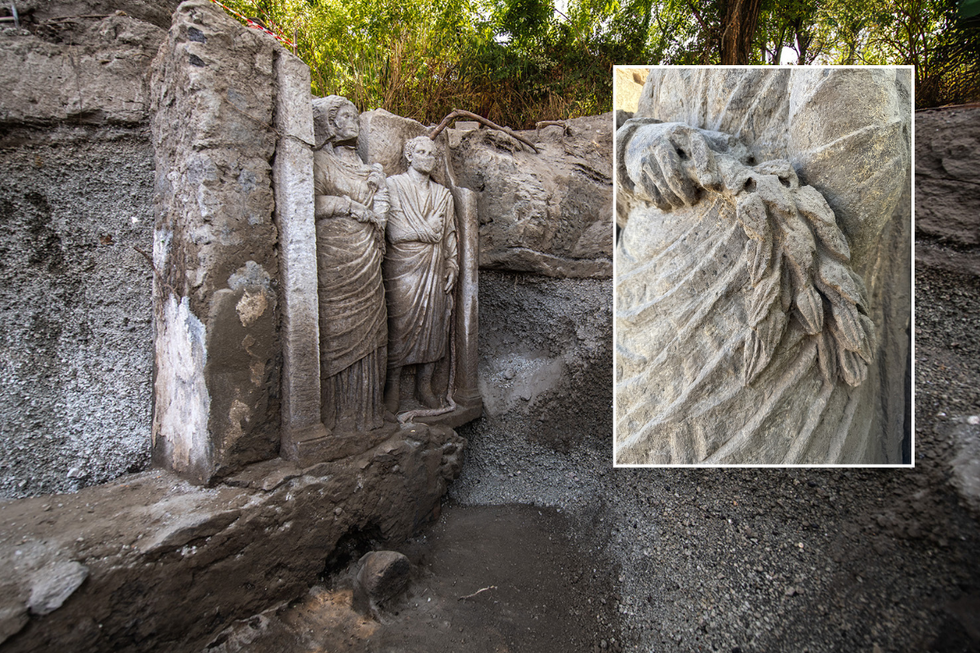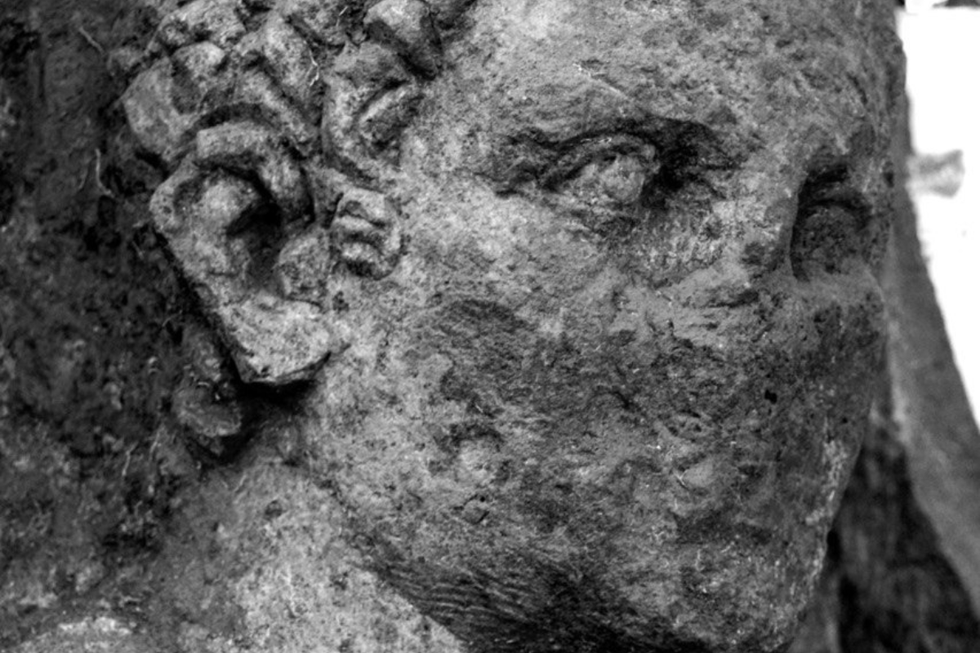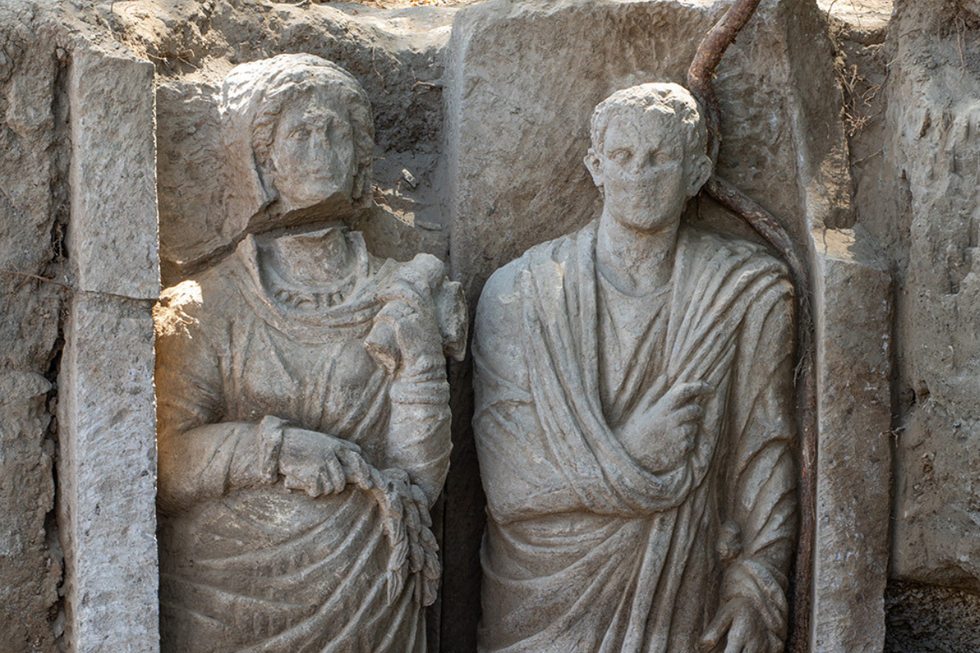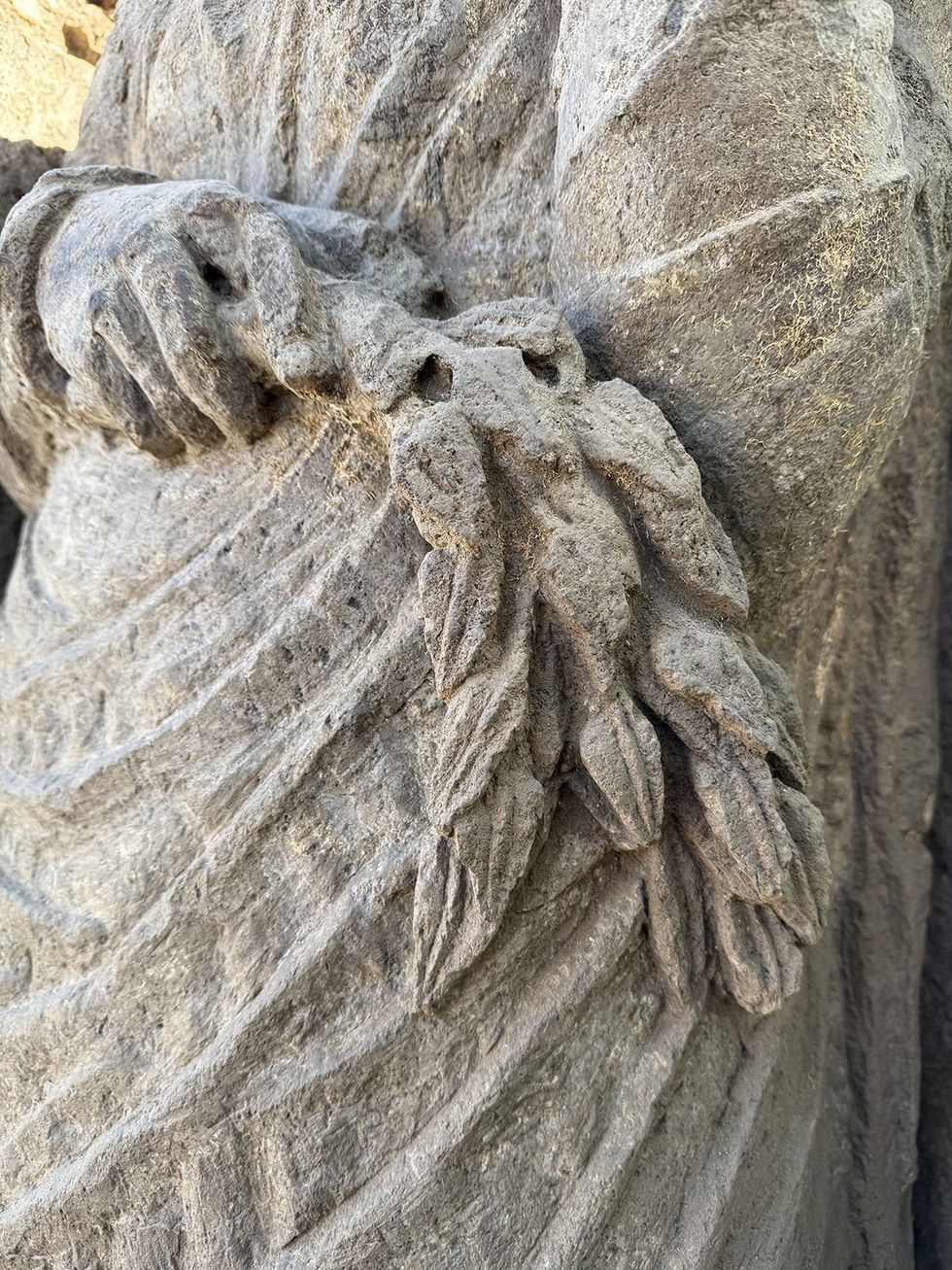George Bunn
Guest Reporter
Archaeologists have unearthed two almost life-size sculptures during excavations of a tomb in the ancient Roman city of Pompeii.
The detailed funerary relics include a female figure believed to have been an important priestess in the local elite.
The discovery provides rare insight into the lives of Roman women who held significant religious positions.
The sculptures were found adorning a huge tomb containing several burial niches in the necropolis of Porta Sarno, one of the main entrance gates to Pompeii.

The ancient Roman city was famously destroyed by the eruption of Mount Vesuvius in AD79. The detailed relics are believed to date back to the late Roman Republic period.
Experts believe the female sculpture depicts a priestess of Ceres, the Roman goddess of agriculture, fertility and motherly relationships.
The figure is adorned with intricately carved jewellery including earrings, rings and bracelets, with a distinctive lunula - a crescent moon pendant - hanging from her necklace.
She appears veiled and dressed in a large cloak over a tunic. The priestess figure is depicted holding what appears to be laurel leaves, which still bear traces of green paint after more than 2,000 years.
LATEST DEVELOPMENTS

These leaves were used in religious ceremonies to purify and bless sacred spaces by dispersing incense and the smoke from aromatic herbs. The bundle of leaves would have been waved to distribute smoke during purification rituals.
In Roman society, where most women were confined to domestic roles, becoming a priestess represented the highest position a woman could aspire to.
This important public role conferred power comparable to that of a male priest. The half-moon symbol on her necklace was not only a protective amulet against evil forces but also linked to lunar cycles, fertility and birth.
The male figure accompanying the priestess is depicted wearing a toga wrapped over his left shoulder.

Gabriel Zuchtriegel, the director of Pompeii archaeological park, noted that the figures were joined together but may not represent a married couple.
"This could be her husband, but it could also be her son. There was no inscription, so we don't know," he explained.
By the feet of the male statue, archaeologists discovered the preserved root of an ancient tree that had grown on top of the tomb.
"It was quite a surprise to find it there a few centimetres beneath the ground," said Zuchtriegel. The two sculptures are currently undergoing restoration work and will be displayed at an exhibition in Pompeii, beginning on April 16

The excavations at the Porta Sarno necropolis are being conducted as a joint project between Pompeii archaeological park and the European University of Valencia.
In 2021, the same project uncovered the partly mummified remains of a former slave who had risen through social ranks.
Find Out More...
The detailed funerary relics include a female figure believed to have been an important priestess in the local elite.
The discovery provides rare insight into the lives of Roman women who held significant religious positions.
The sculptures were found adorning a huge tomb containing several burial niches in the necropolis of Porta Sarno, one of the main entrance gates to Pompeii.

The ancient Roman city was famously destroyed by the eruption of Mount Vesuvius in AD79. The detailed relics are believed to date back to the late Roman Republic period.
Experts believe the female sculpture depicts a priestess of Ceres, the Roman goddess of agriculture, fertility and motherly relationships.
The figure is adorned with intricately carved jewellery including earrings, rings and bracelets, with a distinctive lunula - a crescent moon pendant - hanging from her necklace.
She appears veiled and dressed in a large cloak over a tunic. The priestess figure is depicted holding what appears to be laurel leaves, which still bear traces of green paint after more than 2,000 years.
LATEST DEVELOPMENTS
- Archaeology breakthrough as Neanderthal-like stone tools discovered in China could reshape history
- Archaeology discovery as mystery royal tomb of Egyptian Pharaoh unearthed
- Archaeology breakthrough as scientists uncover part of statue that could solve century-old puzzle

These leaves were used in religious ceremonies to purify and bless sacred spaces by dispersing incense and the smoke from aromatic herbs. The bundle of leaves would have been waved to distribute smoke during purification rituals.
In Roman society, where most women were confined to domestic roles, becoming a priestess represented the highest position a woman could aspire to.
This important public role conferred power comparable to that of a male priest. The half-moon symbol on her necklace was not only a protective amulet against evil forces but also linked to lunar cycles, fertility and birth.
The male figure accompanying the priestess is depicted wearing a toga wrapped over his left shoulder.

Gabriel Zuchtriegel, the director of Pompeii archaeological park, noted that the figures were joined together but may not represent a married couple.
"This could be her husband, but it could also be her son. There was no inscription, so we don't know," he explained.
By the feet of the male statue, archaeologists discovered the preserved root of an ancient tree that had grown on top of the tomb.
"It was quite a surprise to find it there a few centimetres beneath the ground," said Zuchtriegel. The two sculptures are currently undergoing restoration work and will be displayed at an exhibition in Pompeii, beginning on April 16

The excavations at the Porta Sarno necropolis are being conducted as a joint project between Pompeii archaeological park and the European University of Valencia.
In 2021, the same project uncovered the partly mummified remains of a former slave who had risen through social ranks.
Find Out More...
